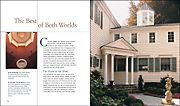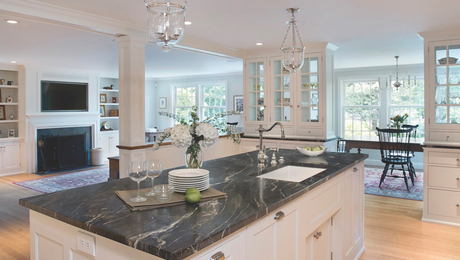Renovating a Colonial Home: The Best of Both Worlds
How one family maintained the traditional rooms of their Colonial for entertaining, but created new spaces for their informal family time

Throughout the country, you can find a stock of older Colonials that are ripe for renovation. The oldest date back to the 1600s and 1700s and await an appreciative owner who can refurbish a slumping structural frame, replace weather-beaten siding, perform masonry repairs, and refinish wide-plank flooring. At the other end of the spectrum are the homes from the 1950s, 1960s, and 1970s that are showing their age and have outlasted home-building fashion — with old tile, pink plumbing fixtures, and avocado appliances that have somehow managed to escape earlier updates. The homes between these two extremes probably require attention to all of the above, along with the undoing of any poorly planned alterations constructed over the years. A spirited renovation can clean up these trouble spots and prepare your Colonial for raising your family in a fresh atmosphere without razing the house.
In this excerpt from Updating Classic America: Colonials, you’ll find out how one family maintained the traditional rooms of their Colonial for entertaining but also created new spaces for their informal family time.
Matthew Schoenherr is an architect in Westport, Connecticut, who has been involved with residential design and the construction industry for 23 years. His six-person architectural firm, Z:Architecture, has completed more than 200 residential additions, renovations, and new homes.
Photos by Grey Crawford, except where noted; photo p. 96 by: Woodruff/Brown; drawings by: Christine Erikson

























